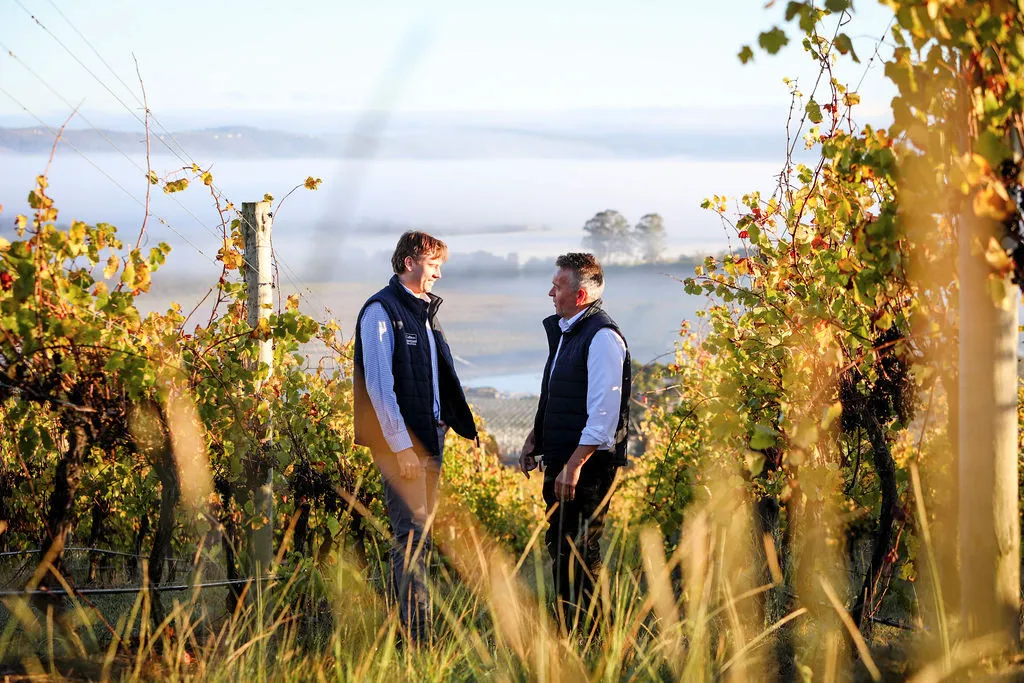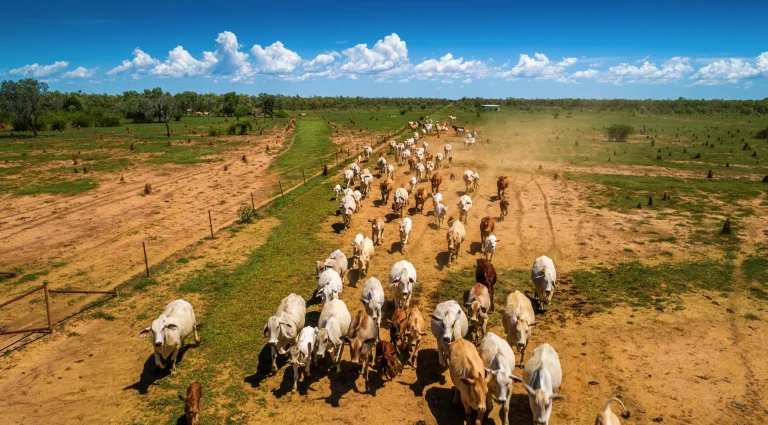How to Assess the Market Value of a Queensland Cattle Station
Queensland’s vast pastoral landscapes represent some of Australia’s most valuable agricultural real estate, with cattle stations commanding significant investment interest from both domestic and international buyers. Understanding how to assess the market value of a Queensland cattle station requires a comprehensive approach that considers multiple factors unique to the pastoral industry. Whether you’re considering purchasing, selling, or simply evaluating your existing holdings, accurate valuation is essential for making informed decisions in this specialized market.
At Agribusiness Horizons, we understand the complexities involved in evaluating pastoral properties across Queensland’s diverse regions. Our specialized expertise in high-value agricultural transactions has helped countless clients navigate the intricacies of cattle station valuations, ensuring they achieve optimal outcomes in their property decisions. If you’re seeking professional guidance on how to assess the market value of a Queensland cattle station, our team of agricultural specialists is ready to provide the comprehensive analysis and strategic insights you need to make confident investment decisions.
This comprehensive guide will walk you through the essential elements of cattle station valuation, from fundamental assessment criteria to advanced market analysis techniques. You’ll gain valuable insights into the factors that drive value in Queensland’s pastoral sector and learn how to apply professional valuation methodologies to your specific situation.
Understanding Queensland’s Cattle Station Market Landscape
Queensland’s cattle station market represents one of Australia’s most dynamic agricultural sectors, characterized by diverse property types ranging from extensive breeding operations to intensive finishing enterprises. The state’s varied climate zones, from tropical north to temperate south, create distinct market segments with unique valuation considerations. Understanding these regional differences is crucial when learning how to assess the market value of a Queensland cattle station.
The pastoral industry in Queensland has undergone significant transformation in recent years, with increased focus on productivity improvements, sustainability practices, and technological integration. Modern cattle stations now incorporate sophisticated water management systems, improved genetics programs, and precision agriculture technologies that significantly impact property values. These developments have created a more complex valuation environment where traditional metrics must be supplemented with assessments of technological capabilities and operational efficiency.
Market dynamics in Queensland’s cattle station sector are influenced by both domestic and international factors. Strong demand from institutional investors, family offices, and international buyers has created competitive conditions that reward well-positioned properties. Understanding these market forces and their impact on valuation is essential for anyone seeking to accurately assess cattle station values in the current environment.
Key Valuation Components for Queensland Cattle Stations
Land Quality and Carrying Capacity Assessment
The foundation of any cattle station valuation begins with a thorough assessment of land quality and carrying capacity. Queensland’s diverse landscapes require careful evaluation of soil types, pasture quality, and sustainable stocking rates. Professional soil testing and pasture assessments provide crucial data for determining a property’s productive potential and long-term sustainability.
Carrying capacity calculations must account for seasonal variations, drought resilience, and management practices. Properties with demonstrated ability to maintain consistent stocking rates through various seasonal conditions typically command premium valuations. The assessment should also consider potential for pasture improvement and infrastructure development that could enhance carrying capacity.
Water Resources and Infrastructure Evaluation
Water security represents one of the most critical factors in cattle station valuations across Queensland. Properties with reliable water sources, including bore water, surface water, and water storage facilities, command significant premiums in the market. The evaluation must assess both quantity and quality of water resources, as well as the infrastructure required to distribute water effectively across the property.
Modern water management systems, including automated watering points, pipeline networks, and water storage facilities, add substantial value to cattle stations. The assessment should consider the age, condition, and capacity of existing infrastructure, as well as potential for expansion or improvement. Water rights and licensing arrangements also play a crucial role in determining overall property value.
Operational Infrastructure and Facilities
The quality and condition of operational infrastructure significantly impact cattle station valuations. This includes cattle yards, sheds, fencing, roads, and accommodation facilities. Well-maintained infrastructure that supports efficient operations typically results in higher property values and reduced operational costs for new owners.
Assessment of infrastructure should consider both current condition and future maintenance requirements. Properties with recently upgraded facilities or those designed for modern cattle handling techniques often command premium prices. The evaluation should also assess the adequacy of infrastructure for the property’s size and operational requirements.
Advanced Valuation Methodologies for Pastoral Properties
Comparative Market Analysis Approach
The comparative market analysis approach forms the cornerstone of professional cattle station valuations. This methodology involves analyzing recent sales of similar properties to establish market benchmarks and identify value drivers. However, the unique characteristics of each cattle station require careful adjustment of comparable sales data to account for differences in location, size, infrastructure, and operational capacity.
Successful application of comparative analysis requires access to comprehensive market data and deep understanding of the factors that influence pastoral property values. Properties must be compared on a like-for-like basis, considering factors such as carrying capacity per hectare, water security, infrastructure quality, and regional market conditions. The analysis should also account for market timing and seasonal factors that may have influenced comparable sales.
Income Capitalization Method
The income capitalization method provides a fundamental approach to cattle station valuation based on the property’s income-generating capacity. This approach requires detailed analysis of historical and projected income streams, including cattle sales, agistment income, and any additional revenue sources. The method involves capitalizing net income at appropriate rates that reflect market conditions and investment risk.
Accurate application of income capitalization requires comprehensive understanding of cattle station economics, including seasonal variations, commodity price cycles, and operational costs. The analysis must consider both current income levels and potential for improvement through better management practices or infrastructure investment. Risk assessment is crucial, as pastoral properties face various challenges including weather variability, market volatility, and operational risks.
Discounted Cash Flow Analysis
For larger cattle stations or those with significant development potential, discounted cash flow analysis provides a sophisticated valuation approach. This method involves projecting future cash flows over an extended period and discounting them to present value using appropriate discount rates. The analysis must account for capital expenditure requirements, operational improvements, and market projections.
DCF analysis is particularly valuable for properties with development potential or those undergoing significant operational changes. The method requires detailed financial modeling and careful consideration of various scenarios and sensitivity factors. Professional expertise is essential to ensure accurate projections and appropriate risk adjustments.
Regional Market Considerations Across Queensland
Queensland’s vast geography creates distinct regional markets with unique characteristics that significantly impact cattle station valuations. The state’s northern regions, including the Gulf Country and Cape York, offer extensive properties with lower carrying capacities but significant scale advantages. These properties often appeal to institutional investors seeking large-scale pastoral operations with potential for operational improvements.
Central Queensland’s cattle stations benefit from more reliable rainfall patterns and higher carrying capacities, making them attractive to a broader range of buyers. The region’s proximity to major processing facilities and transport infrastructure adds value through reduced operational costs and improved market access. Properties in this region often command premium prices due to their operational efficiency and strategic location.
Southern Queensland’s cattle stations typically feature higher-quality pastures and more intensive management systems. These properties often incorporate finishing operations and value-added enterprises that enhance overall profitability. The region’s proximity to major population centers and export facilities creates additional value through improved market access and reduced transport costs.
| Region | Typical Carrying Capacity | Water Security | Infrastructure Quality | Market Appeal |
|---|---|---|---|---|
| Northern Queensland | Lower per hectare | Variable | Basic to moderate | Institutional investors |
| Central Queensland | Moderate to high | Good | Moderate to high | Broad market appeal |
| Southern Queensland | High | Excellent | High | Premium buyers |
| Western Queensland | Variable | Challenging | Basic to moderate | Specialized buyers |
Agribusiness Horizons’ Comprehensive Valuation Services
At Agribusiness Horizons, we bring specialized expertise to cattle station valuations across Queensland, combining deep agricultural knowledge with advanced analytical capabilities. Our comprehensive valuation services encompass all aspects of pastoral property assessment, from detailed land and infrastructure evaluations to sophisticated financial modeling and market analysis.
Our approach to cattle station valuation integrates multiple methodologies to provide clients with accurate, defensible valuations that reflect current market conditions and future potential. We understand that each cattle station is unique, requiring tailored analysis that considers specific operational characteristics, regional factors, and market positioning. Our team’s extensive experience in Queensland’s pastoral sector ensures that our valuations capture all relevant value drivers and market dynamics.
We also provide ongoing market intelligence and strategic advice to help clients optimize their cattle station investments. Our services extend beyond simple valuation to include operational assessments, improvement recommendations, and market timing analysis. Whether you’re buying, selling, or seeking to enhance the value of your existing cattle station, our comprehensive approach ensures you have the insights needed to make informed decisions.
Technology and Innovation in Modern Cattle Station Valuation
The integration of technology and innovation has revolutionized cattle station operations and significantly impacted valuation methodologies. Modern properties equipped with GPS tracking systems, automated feeding equipment, and sophisticated herd management software command premium valuations due to their operational efficiency and data-driven management capabilities.
Precision agriculture technologies, including satellite monitoring, soil sensors, and weather stations, provide valuable data for optimizing pasture management and livestock performance. Properties with these technologies often demonstrate superior productivity metrics and reduced operational costs, translating to higher market values. The valuation process must consider both the current value of installed technology and its potential for enhancing future profitability.
Genetic improvement programs and breeding technologies also contribute significantly to cattle station values. Properties with superior genetics, artificial insemination facilities, and comprehensive breeding records often command premium prices due to their competitive advantages in livestock production. The assessment of genetic assets requires specialized knowledge of breeding programs and their impact on long-term profitability.
Future Trends and Market Outlook for Queensland Cattle Stations
The Queensland cattle station market continues to evolve in response to changing consumer preferences, environmental considerations, and technological advances. Increasing focus on sustainability and carbon sequestration creates new value opportunities for properties that can demonstrate environmental stewardship and participate in carbon credit programs.
Consumer demand for premium, sustainably produced beef is driving interest in cattle stations with certified organic or grass-fed production systems. Properties positioned to meet these market demands often command premium valuations due to their ability to access higher-value market segments. The valuation process must consider both current premium potential and future market trends.
Climate adaptation and resilience are becoming increasingly important factors in cattle station valuations. Properties with demonstrated ability to maintain productivity under varying climatic conditions, including drought resilience and flood recovery capabilities, are viewed favorably by investors. The assessment should consider both historical performance and future climate projections when evaluating long-term value potential.
Conclusion
Successfully assessing the market value of a Queensland cattle station requires a comprehensive understanding of multiple interconnected factors, from land quality and infrastructure to market dynamics and technological capabilities. The complexity of pastoral property valuation demands professional expertise and access to current market data to ensure accurate assessments that reflect true market value.
The evolving nature of Queensland’s cattle station market, driven by technological innovation, sustainability requirements, and changing investor preferences, creates both opportunities and challenges for property owners and investors. Understanding these trends and their impact on valuation is essential for making informed decisions in this dynamic market sector.
As you consider your cattle station valuation needs, several important questions merit careful consideration: How do current market conditions affect the timing of your property decisions? What infrastructure improvements could enhance your property’s value and marketability? How can you position your cattle station to capitalize on emerging market trends and premium opportunities?
At Agribusiness Horizons, we’re committed to helping you navigate these complex valuation challenges with confidence and expertise. Our comprehensive approach to cattle station assessment ensures you have the insights and analysis needed to make strategic decisions that align with your investment objectives. Contact us today to discuss how our specialized valuation services can support your cattle station investment goals and help you achieve optimal outcomes in Queensland’s dynamic pastoral property market.



